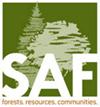贸易全球化背景下的非木材林产品产业发展——以武夷山为例
IF 1.5
4区 农林科学
Q2 FORESTRY
引用次数: 0
摘要
在贸易全球化的大趋势下,发展中国家在全球价值链中扮演着不可或缺的角色。在中国,林产品的生产和贸易在平衡产业发展和生态保护方面显得相当敏感。同时,增加非木材林产品贸易已成为可持续林业发展的一个新方向。本文利用武夷山市2008 - 2020年976家乌龙茶生产商的数据,探讨了NTFP贸易全球化进程对NTFP生产者资本投入的影响。结果表明,茶叶产品贸易全球化进程是武夷山市乌龙茶生产者资本投入的驱动因素,乌龙茶生产者资本投入随着森林资源和生产者规模的增加而增加。此外,我们的研究结果表明,地方政府实施了财政政策,以促进可持续的复合模式(SCM)在茶叶生产中,包括梯田保护、有机肥、茶阔叶共生和生态水系统。在贸易全球化带动的茶叶产品需求结构性增长的背景下,供应链促进政策在与自然和谐相处的基础上,提高了乌龙茶产品的数量和质量,实现了政府和生产者的互利共赢。研究启示:本文的研究结果证明了NTFP贸易全球化和多样化能够通过增加生产者的生产性资本投入来促进NTFP产业的发展,并创新性地总结了NTFP生产模式调整的环保解决方案。林地的稀缺性和森林资源的社会利用要求将可持续治理纳入NTFP产业的发展。在政府的支持下,可持续生产NTFP的新模式可以服务于合理利用森林资源的长期规划。本文章由计算机程序翻译,如有差异,请以英文原文为准。
Development of Non-Timber Forest Product Industry in the Context of Trade Globalization: A Case Study in Wuyishan, China
With the trend of trade globalization, developing countries have an indispensable role in the global value chain. In China, production and trade of forest products appear to be considerably sensitive in balancing industry development and ecological conservation. Simultaneously, increased trade in non-timber forest products (NTFPs) has merged as a new direction for sustainable forestry development. This study explores the effect of the NTFP trade globalization process on NTFP producer capital input using a dataset of 976 oolong tea producers in Wuyishan City, China, from 2008 to 2020. We ran pooled- ordinary least square regression and the results show that the trade globalization process of tea products is a driving force in oolong tea producer capital inputs in Wuyishan City, which increases with forest resources and producer scale. Additionally, our findings reveal that the local government implemented a fiscal policy to promote a sustainable composite model (SCM) in tea production, which includes terrace protection, organic fertilizers, tea-broadleaf symbiosis, and ecological water systems. Given structural growth in demand for tea products driven by trade globalization, the SCM promotion policy enhanced the quantity and quality of oolong tea products based on a harmonious coexistence with nature resulting in a mutually beneficial outcome for the government and producers.
Study Implications: Results of our study provide evidence that NTFP trade globalization and diversification can promote the NTFP industry by increasing productive capital inputs by producers and innovatively summarize an environmentally benign solution for the adjustment of the production model of NTFPs. The scarcity of forestland and the social uses of forest resources require embedding sustainable governance into the development of the NTFP industry. With government support, the new model of sustainable NTFP production can serve the long-term planning of rational forest resource use.
求助全文
通过发布文献求助,成功后即可免费获取论文全文。
去求助
来源期刊

Forest Science
农林科学-林学
CiteScore
2.80
自引率
7.10%
发文量
45
审稿时长
3 months
期刊介绍:
Forest Science is a peer-reviewed journal publishing fundamental and applied research that explores all aspects of natural and social sciences as they apply to the function and management of the forested ecosystems of the world. Topics include silviculture, forest management, biometrics, economics, entomology & pathology, fire & fuels management, forest ecology, genetics & tree improvement, geospatial technologies, harvesting & utilization, landscape ecology, operations research, forest policy, physiology, recreation, social sciences, soils & hydrology, and wildlife management.
Forest Science is published bimonthly in February, April, June, August, October, and December.
 求助内容:
求助内容: 应助结果提醒方式:
应助结果提醒方式:


